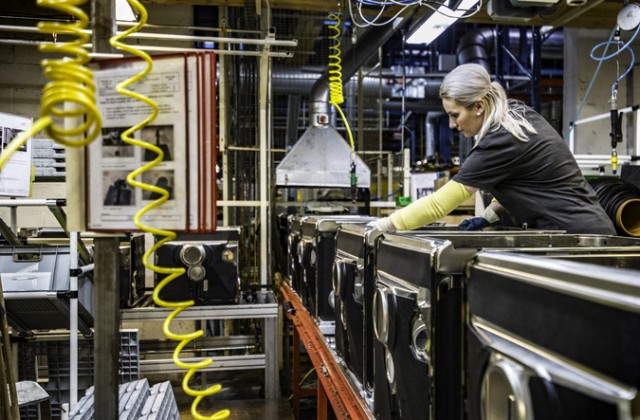
The world is currently experiencing an unprecedented semiconductor shortage that shows no signs of being resolved any time soon. With companies in almost every sector still recovering from the devastating effects of the pandemic, the timing couldn’t be worse.
Goldman Sachs identifies 169 different industries that are affected by the shortage in some way, but some are feeling the pain more than others. The consumer products, life sciences, and tech industries, among others, are all struggling to get their hands on the chips they need to get their products to market, but the automotive industry has been hit harder than most.
The typical new vehicle uses about 1,400 microchips, and with these in short supply, many of the world’s leading automakers have been forced to cut production by temporarily closing down some of their manufacturing facilities. The impact on sales has been disastrous. GM says its 2021 vehicle sales are down 30 percent year over year, while Ford’s net income fell 24 percent in Q3. Consulting firm AlixPartners forecasts the chip shortage will cost the global auto industry $210 billion in revenue in 2021 alone.
Expert opinions vary on how long semiconductors will continue to be a bottleneck in the supply chain. Some predict the worst of it will be over by the end of 2022, while others expect it to last well into 2023 and possibly beyond.
How did we get here? And what can supply chain professionals learn from this crisis to help them be prepared for the next major supply chain disruption?
What’s causing the global semiconductor chip shortage?
Everyone remembers the panic-driven spike in demand for toilet paper during the early weeks of the pandemic, but we tend to forget that at the same time consumers were frantically clamoring for another category of products: electronics.
Stuck at home and suddenly needing the right devices for working, learning and entertaining themselves online, consumers around the globe began buying all sorts of sophisticated products that had one thing in common: they were all equipped with one or more microchips. Laptops, gaming PCs, tablets, monitors, smart TVs, appliances, security systems, video gaming consoles—demand for these and many other chip-dependent devices soared during the pandemic to record levels. Tablet sales in 2020 were up nearly 14 percent compared to 2019, and personal computer sales grew by 11 percent over 2019, the biggest increase since 2010. During the same period, game console revenues rose 18 percent to $11.9 billion and annual sales of smart TVs increased by 7 percent.
This unforeseen surge in demand for smart, chip-enabled devices of all kinds meant that the market needed enormous volumes of all the different types of chips at the same time. Like so many aspects of the Covid-19 economy, this one caught many supply chain planners in the semiconductor industry flatfooted. Because they were unable to predict this scenario, there was no way they could produce enough of the right kinds of chips fast enough to satisfy demand.
While skyrocketing consumer demand was the biggest driver behind the current chip shortage, it wasn’t the only one. Semiconductor industry experts point to a variety of additional contributing factors, including known structural issues in the industry, a fire at one of the world’s leading auto chip plants in Japan, and the disruption to U.S. semiconductor manufacturing caused by the power crisis in Texas in February of this year.
What can supply chain planners learn from the semiconductor shortage?
If the economic upheaval caused by the pandemic has taught us anything in the supply chain industry, it’s that the next major disruption is inevitable, and the companies that take steps now to transform their supply chain planning capabilities will be the best prepared to not only weather the storm, but set themselves apart from competition.
There are many factors that go into achieving this level of preparedness. Having full, end-to-end transparency across your supply chain is critical, so that planners can know sooner and act faster when disruption happens. By conducting what-if modeling and adopting concurrent planning methods, planners have the ability to evaluate a variety of scenarios in real-time so they’re able to assess the impact of various changes on the supply chain and make informed decisions about the supplier base.
Successfully contending with the level of supply chain disruption that’s now occurring in the semiconductor industry also requires planners to move away from the historical models that prioritized functional excellence and shift to a new planning paradigm that recognizes the need for balancing accuracy with agility.
Equipped with these capabilities, supply chain planners will have a high degree of transparency across the supply chain to know what to do when a problem arises, and the agility to make a decision in time to make a difference.
To learn more about defeating the next disruption by increasing agility and transparency across all tiers of your supply chain, watch our webinar with Supply Chain Brain, TrinityRail and Genpact, The signal for change: Building a hyperconnected supply chain at TrinityRail.





